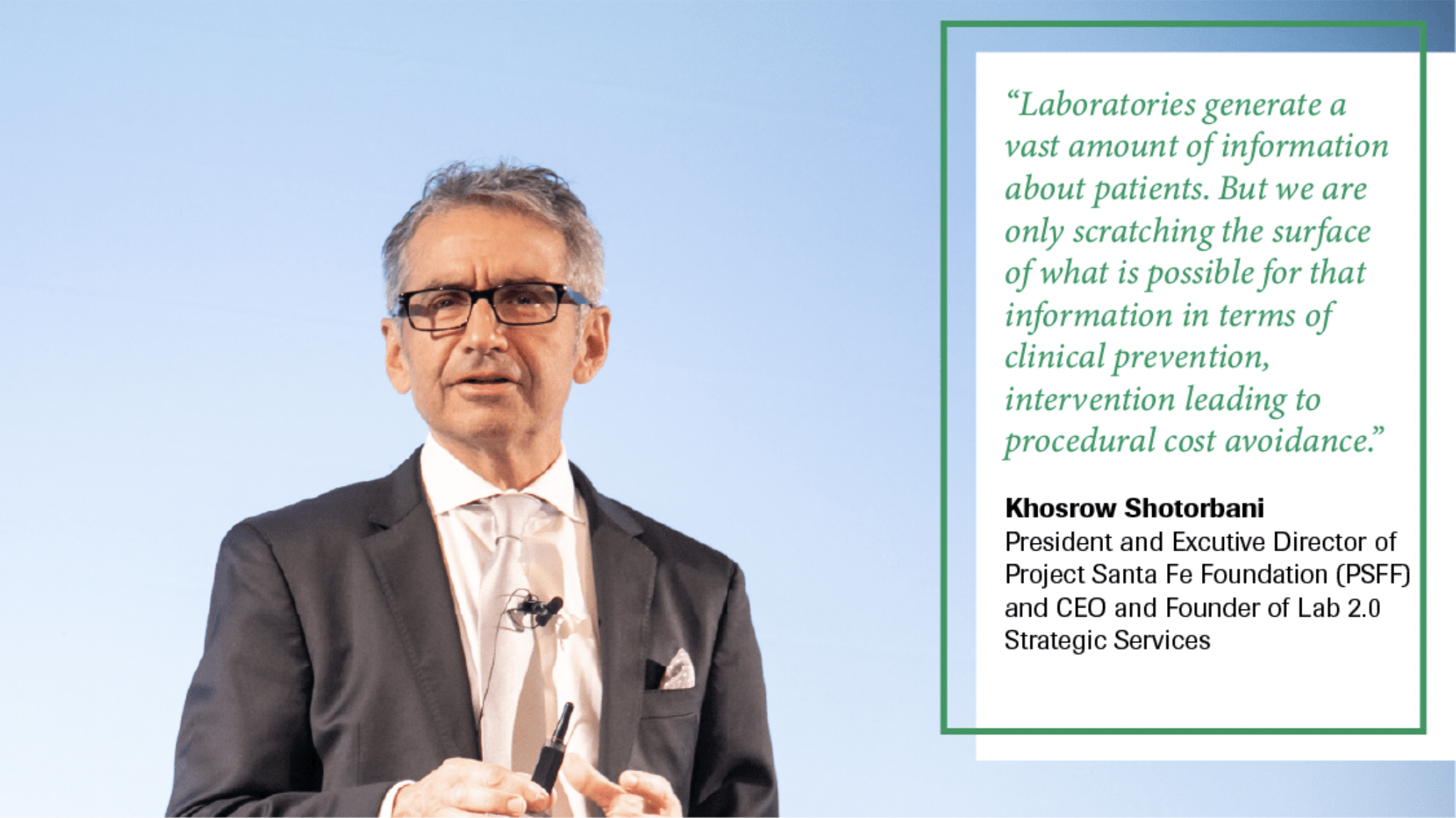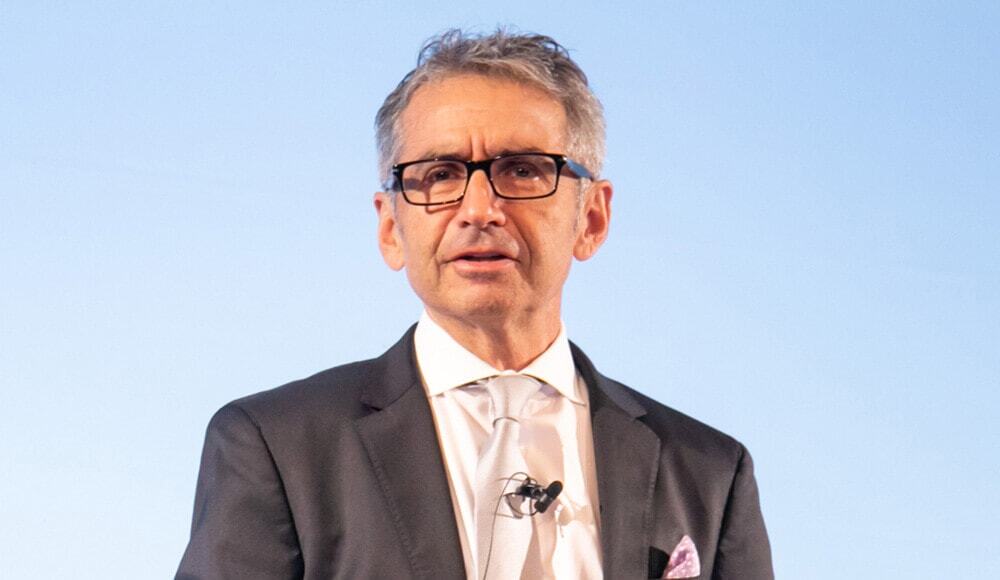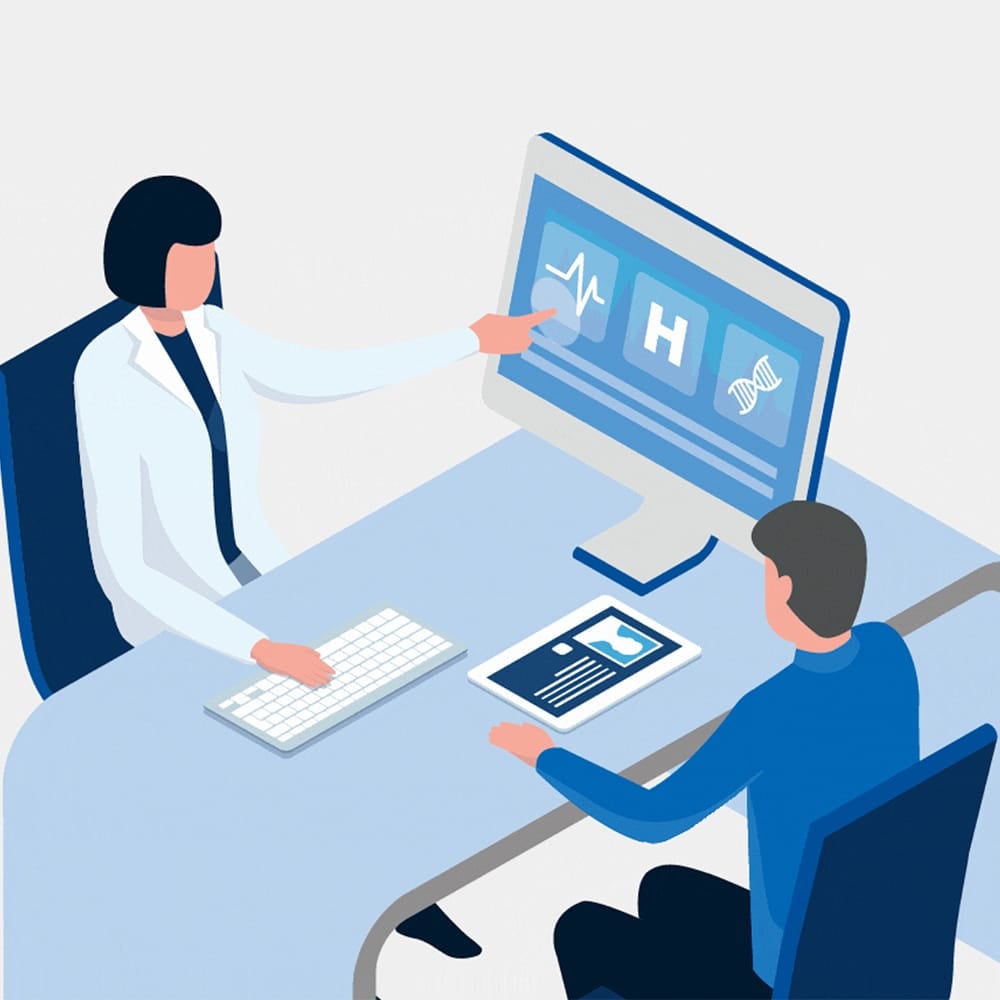Around the world, clinical laboratories are spearheading novel approaches to patient care and healthcare systems management. By leveraging their unique data and expertise, they are exploring new frontiers for the clinical laboratory profession in an era of rapid technological change.
Despite tremendous improvements in medical science and technology over the past century, healthcare systems around the world are struggling to deliver patient-centric care, at an affordable cost. Yet, new tools and business models are starting to make waves across the healthcare system and hold great promise in improving efficiency and patient outcomes.
So, where does clinical laboratory fit in this gradual, but inevitable, transformation?
For years, laboratory professionals have worked tirelessly to improve the quality, speed, and cost of laboratory services. By embracing new laboratory technologies and lean management techniques, they have improved the accuracy of their results and the productivity of their operations, leading to better services at progressively more affordable prices.
But, many experts argue that operational excellence, while crucial for laboratories to effectively fulfil their core responsibility of processing samples and returning results, is no longer enough to secure the future of the clinical laboratories. They believe that laboratories have both an opportunity and an obligation to play an even greater role in driving quality and efficiency in healthcare delivery.
Lessons from the Western world
As one of the world’s leading hubs for healthcare innovation, the United States (US) offers many clues about the place of the clinical laboratories in the future of care. Some of those clues can be found in the work of the Project Santa Fe Foundation (PSFF), an American non-governmental organisation (NGO) that helps laboratories in the US and around the world to redefine their value proposition for healthcare systems.

“Laboratories generate a vast amount of information about patients,” says Khosrow Shotorbani, President and Executive Director of PSFF. “But we are only scratching the surface of what is possible for that information in terms of clinical prevention and intervention leading to procedural cost avoidance.”
To help clinical laboratories fulfil their potential, PSFF encourages them to adopt a “Clinical Lab 2.0 business model” that uses longitudinal laboratory data to help manage population health. The organisation argues that clinical laboratories are uniquely positioned to do so because their data is highly actionable, predictive, has zero latency, and touches more patients than any other ancillary healthcare service.
“Clinical laboratories can be the active meteorologists of disease progression,” adds Shotorbani, who also serves as CEO and Founder of Lab 2.0 Strategic Services, a consultancy. “More than anyone else, we have the capability to predict the onset and the velocity of disease, and to detect who needs intervention at the individual or population level.”
Shotorbani previously served as CEO and President of TriCore Reference Labs, the largest clinical laboratory operator in the American state of New Mexico, where he ran a pilot that showcased precisely how clinical laboratory data can support population health management. Conducted in partnership with a major statewide payer, TriCore focused on addressing care gaps and managing costs related to prenatal care and several other highly prevalent chronic conditions.
The pilot began with a basic risk stratification exercise in which TriCore analysed laboratory data to find situations where high-risk pregnancies were not being identified and managed effectively. By creating dashboards that visualised data and protocols for early intervention, the pilot drove major improvements in maternal health outcomes, including a 73% improvement in care gaps, 30% reduction in pre-term delivery rates, 33% reduction in neonatal intensive care units, and a 10% reduction in emergency room visits due to lack of adequate primary care.
While many clinical laboratories in Asia still lack the expertise, infrastructure, and incentives to conduct pilots like this one, the situation is rapidly evolving. Advanced equipment and information technologies are being deployed across the region, opening new possibilities for the next generation of laboratory professionals in any country to contribute meaningfully to population health management.
Laboratories in Asia look to the future
Most of the major projects in the Clinical Lab 2.0 community are currently happening in the US, where pressure to reduce healthcare costs has reached astronomical proportions. While some Asian countries — such as Japan and Singapore — outperform the US on many key measures of healthcare systems efficiencies, most of the region faces similar pressures associated with rising costs and insufficient outcomes. Clinical laboratories in Asia may be able to learn from case studies in the US, but they will also need to develop their solutions, according to experts here.
With a large ageing population, a shortage of healthcare workers, and the rising burden of chronic diseases, healthcare systems in the region cannot rely on lessons from Western Europe or the US. Solutions designed for this part of the world must address unique challenges and local needs. In Singapore for example, the country is pushing ahead with a National Electronic Health Record (NEHR), which aims to provide a consolidated view of every patient’s health record across every interaction with the Singapore health system — including lab tests and results — from birth to death.
At the clinical laboratory at the National University Hospital (NUH), an 1100-bed tertiary teaching hospital in Singapore, the team, which comprises technologists, clinicians, and scientists from all specialties, works together to provide testing and consultancy services, including the correct test selection, interpretation of test results, and solving potential problems related to possible interferences.
Other health systems around Asia have also launched similar initiatives. The public health system of Hong Kong, for example, operates a national-level electronic health record system that facilitates the sharing of patient data across both public and private hospitals. Like Singapore, it has a strong focus on leveraging patient data to improve care.
Longer-term, the rise of biosensors and wearable health trackers present further opportunities for laboratories to co-create new models of care. Many laboratories in Asia have been participating in pilot programs that combine connected medical devices with telehealth services to optimise chronic care management.
Within the healthcare ecosystem, clinical laboratories hold the most data on patient health. Digitalisation is the future of laboratory medicine and healthcare systems management. How laboratories utilise this data to create value could place them at the forefront of patient care.
Related read: Thailand’s Journey to Laboratory Excellence
Stay updated on healthcare and diagnostics news with Roche Diagram magazine.
*The information contained in this article was extracted from Edition 2020, Vol 7.






